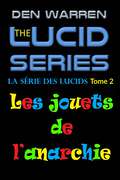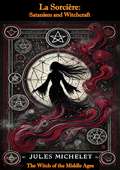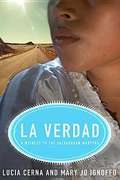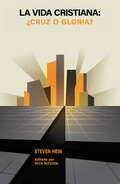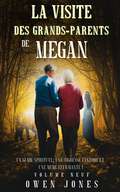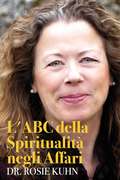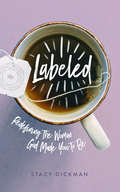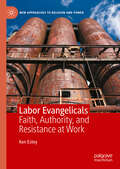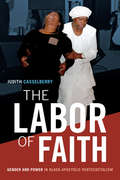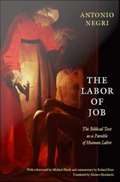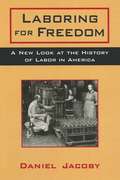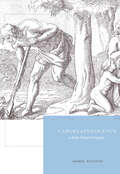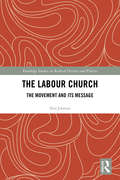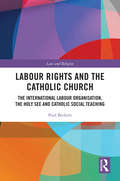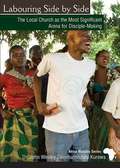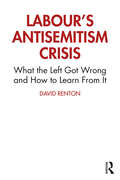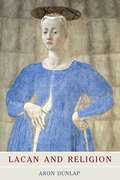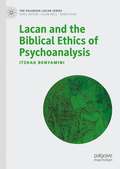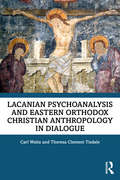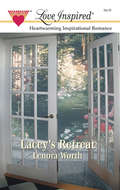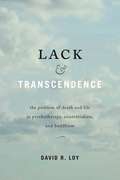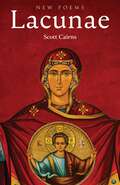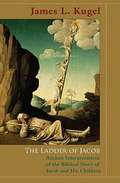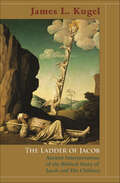- Table View
- List View
La série des Lucids, Tome 2, Les jouets de l’anarchie (La série des Lucids #2)
by Den WarrenDans un futur pas si éloigné que ça, dans un pays où tout va à vau-l’eau car on a négligé de remédier à l’addiction due à la réalité virtuelle, un jeune garçon et sa sœur ne fuient pas seulement les moissonneurs d’organes mais aussi les autorités tyranniques. En effet, celles-ci les combattent parce qu’ils sont aidés par des androïdes rebelles qui défendent le droit de l’Homme à s’informer sur Dieu, quel qu’en soit le prix. Dans ce deuxième tome de la série des Lucids — qui peut sans problème être lu indépendamment — les Inquisiteurs des Nations unies et les unités de troupes anti-silicium cherchent à éliminer les androïdes de cette série. Les Lucids, quant à eux, découvrent de nouvelles manières de saper la nation, Homeland. Leurs projets séditieux vont-ils leur apporter la victoire qu’ils attendent ? Cette série, dépourvue de choses choquantes, convient à des adolescents, aussi bien qu’à des non-chrétiens par son côté divertissant et suscitant la réflexion.
La Sorcière: Satanism And Witchcraft - The Witch Of The Middle Ages
by Jules MicheletLa Sorcière: Satanism and Witchcraft - The Witch of the Middle Ages by Jules Michelet is a captivating and provocative exploration of the history of witchcraft, the persecution of witches, and the complex societal forces that shaped the witch hunts of the Middle Ages. Originally published in 1862, this groundbreaking work by the renowned French historian offers a unique blend of historical analysis, social commentary, and romanticism, painting a vivid picture of the witch as both victim and rebel.Michelet's La Sorcière delves into the dark and often tragic lives of women accused of witchcraft, examining how these women, often healers, midwives, and wise women, became targets of fear and hatred in a patriarchal society. He portrays the witch as a symbol of resistance against the oppressive structures of the medieval Church and feudal society, a figure who embraced forbidden knowledge and ancient, pagan practices that challenged the established order.Through his lyrical and passionate prose, Michelet presents the witch not only as a tragic victim of persecution but also as a misunderstood and powerful embodiment of female strength, knowledge, and defiance. He explores the witch’s connection to nature, her role in local communities, and the complex relationships between witchcraft, heresy, and Satanism.La Sorcière is more than just a historical study; it is a deeply humanistic and empathetic portrayal of those who suffered under the brutal weight of superstition and religious zealotry. Michelet’s work has influenced generations of historians, feminists, and scholars of the occult, offering a powerful critique of the social and religious forces that fueled the witch hunts.This book is an essential read for anyone interested in the history of witchcraft, the social dynamics of the Middle Ages, and the enduring cultural legacy of the witch. La Sorcière continues to resonate with modern readers, providing a compelling and insightful look into the dark chapters of history and the resilience of those who lived through them.
La Verdad: A Witness to the Salvadoran Martyrs
by Lucia Cerna Mary Jo IgnoffoA firsthand account of the El Salvador martyrdoms and the process of resettling in the United States by Lucia Cerna, a housekeeper at the UCA, through transcribed interviews; also an academic and politically adept reading of El Salvador's history and the vagaries of the American immigration system by a local scholar and professor.
La vida cristiana: ¿cruz o gloria?
by Steven Hein¿ Llevas una vida espiritual saludable? ¿ Qué implica superar las pruebas y tribulaciones de la vida cristiana? ¿ Con qué criterio hemos de medir nuestra rectitud?Estas son solo algunas de las tí picas preguntas que plantean hoy los libros má s populares de ayuda espiritual y vida cristiana. Son preguntas que a menudo conducen a respuestas deficientes que solo causan mayor incertidumbre en los lectores respecto a la fe que se les concede por medio de Cristo crucificado.El Dr. Steven Hein les da un giro a estas preguntas, y ofrece una perspectiva radicalmente distinta sobre có mo es la verdadera vida cristiana. En contra de la opinió n popular, el cristianismo no se trata del é xito o los logros, ni deberí a enfocarse en el Cristo resucitado glorificado. Antes bien, el cristianismo siempre ha estado centrado primordialmente en aquella antigua y cruenta cruz, donde Cristo fue crucificado por ti en su plena humanidad y plena divinidad.
La visite des grands-parents de Megan: Un guide spirituel, une tigresse fantôme et une mère effrayante! (La série Megan psychique #9)
by Owen JonesLa visite des grands-parents de Megan Un guide spirituel, une tigresse fantôme et une mère effrayante! Les grands-parents de Megan téléphonent un soir sans prévenir pour demander s’ils peuvent descendre pour la fin de semaine. Megan et ses parents s’inquiètent que l’un d’eux ne soit malade, mais ce n’est pas le cas. Maintenant qu’ils sont retraités, ils ont tout simplement plus de temps libre et désirent mieux connaître Megan. La fin de semaine réserve de nombreuses surprises, mais la meilleure pour Megan, c’est que ses grands-parents sont sympathiques envers ses croyances. Ils peuvent même sentir la présence de Grrr. « La visite des grands-parents de Megan » est le neuvième court roman dans la « série Megan », où le thème général touche le développement psychique de Megan, une adolescente, dont le père est devenu sympathique envers les guides familiers et spirituels, mais dont la mère est toujours contre sa croyance aux fantômes.
L'ABC della Spiritualità negli Affari
by Dr Rosie KuhnCome si introduce la spiritualità negli affari? E' elementare - inizia con l'ABC. Questo piccolo libro fornisce una base potente ma elegante su cui costruire una forte presenza spirituale sul posto di lavoro. Costruito su saggezza, gentilezza e compassione, esplora 26 idee fondamentali relative alla spiritualità. Nessun dogma o retorica religiosa; solo una chiara articolazione delle verità essenziali che si trovano in ogni tradizione religiosa e spirituale. La spiritualità sul posto di lavoro è stata riconosciuta come una megatrend nel 2010. Nel 2015, siamo appollaiati sull'orlo di un cambiamento di paradigma, e l'ABC di Spirituality in Business ci dà la piattaforma da cui lanciare la realizzazione dello spirito umano.
Labeled: Redefining the Woman God Made You to Be
by Stacy DickmanWhat if the labels are right, but the definitions are all wrong?The world's definition of an ideal woman often becomes a lady’'s personal list of inadequacies. The culture-created pressure to be the ideal woman begins in adolescence and can consume a woman’s focus well into adulthood. Issues like bullying, obesity, drug and alcohol abuse, depression, and anxiety are on the rise, and they often stem from women trying to find value in stereotypes and social acceptance rather than in their true worth.How can a woman filter through the cultural noise and expectations to understand who God has really made her to be? In Labeled, Stacy examines seven words that society frequently uses to compare women to each other. Then, she offers insight, biblical definitions, and practical solutions for breaking the traps set by these labels in order to reclaim them as God honoring expressions of who God created us to be. Chapters also include questions for reflection and group discussion. Relatable and entertaining, Labeled offers healing for women who have struggled with society’s poor definitions of womanhood and encouragement for women striving to change them.
Labios en la ventana
by Jolanta GębkaEn este libro de poemas hay obras de carácter satírico y romántico. Labios en la ventana, ¿Cuál puede ser? Algo se ve por la ventana. Puede que vean Lo que está pasando En mis obras Que lo describen en poesía.
Labor Evangelicals: Faith, Authority, and Resistance at Work (New Approaches to Religion and Power)
by Ken EsteyLabor Evangelicals studies theologically conservative working class evangelicals in the United States who resist the common preconception that they eagerly embrace deregulation, unfettered markets, and globalized capital. Methodologically, this book studies evangelical workers at the grassroots level to discern the complexity of their perspectives about work, unions, class, and power. This book shows how white and African American evangelicals think about labor in working-class communities in Bethlehem, Pennsylvania and Moncure, North Carolina.
The Labor of Faith: Gender and Power in Black Apostolic Pentecostalism
by Judith CasselberryIn The Labor of Faith Judith Casselberry examines the material and spiritual labor of the women of the Church of Our Lord Jesus Christ of the Apostolic Faith, Inc., which is based in Harlem and one of the oldest and largest historically Black Pentecostal denominations in the United States. This male-headed church only functions through the work of the church's women, who, despite making up three-quarters of its adult membership, hold no formal positions of power. Casselberry shows how the women negotiate this contradiction by using their work to produce and claim a spiritual authority that provides them with a particular form of power. She also emphasizes how their work in the church is as significant, labor intensive, and critical to their personhood, family, and community as their careers, home and family work, and community service are. Focusing on the circumstances of producing a holy black female personhood, Casselberry reveals the ways twenty-first-century women's spiritual power operates and resonates with meaning in Pentecostal, female-majority, male-led churches.
The Labor of Job: The Biblical Text as a Parable of Human Labor
by Antonio NegriIn The Labor of Job, the renowned Marxist political philosopher Antonio Negri develops an unorthodox interpretation of the Old Testament book of Job, a canonical text of Judeo-Christian thought. In the biblical narrative, the pious Job is made to suffer for no apparent reason. The story revolves around his quest to understand why he must bear, and why God would allow, such misery. Conventional readings explain the tale as an affirmation of divine transcendence. When God finally speaks to Job, it is to assert his sovereignty and establish that it is not Job's place to question what God allows. In Negri's materialist reading, Job does not recognize God's transcendence. He denies it, and in so doing becomes a co-creator of himself and the world. The Labor of Job was first published in Italy in 1990. Negri began writing it in the early 1980s, while he was a political prisoner in Italy, and it was the first book he completed during his exile in France (1983-97). As he writes in the preface, understanding suffering was for him in the early 1980s "an essential element of resistance. . . . It was the problem of liberation, in prison and in exile, from within the absoluteness of Power. " Negri presents a Marxist interpretation of Job's story. He describes it as a parable of human labor, one that illustrates the impossibility of systems of measure, whether of divine justice (in Job's case) or the value of labor (in the case of late-twentieth-century Marxism). In the foreword, Michael Hardt elaborates on this interpretation. In his commentary, Roland Boer considers Negri's reading of the book of Job in relation to the Bible and biblical exegesis. The Labor of Job provides an intriguing and accessible entry into the thought of one of today's most important political philosophers.
Laboring for Freedom: New Look at the History of Labor in America
by Daniel JacobyThis text examines the concept of freedom in the context of American labour history. Nine essays develop themes in this history which show that liberty of contract and inalienable rights form two contradictory traditions concerning freedom.
Labors of Innocence in Early Modern England
by Joanna PicciottoIn seventeenth-century England, intellectuals of all kinds discovered their idealized self-image in the Adam who investigated, named, and commanded the creatures. Reinvented as the agent of innocent curiosity, Adam was central to the project of redefining contemplation as a productive and public labor. It was by identifying with creation’s original sovereign, Joanna Picciotto argues, that early modern scientists, poets, and pamphleteers claimed authority as both workers and “public persons.” Tracking an ethos of imitatio Adami across a wide range of disciplines and devotions, Picciotto reveals how practical efforts to restore paradise generated the modern concept of objectivity and a novel understanding of the author as an agent of estranged perception. Finally, she shows how the effort to restore Adam as a working collective transformed the corpus mysticum into a public. Offering new readings of key texts by writers such as Robert Hooke, John Locke, Andrew Marvell, Joseph Addison, and most of all John Milton, Labors of Innocence in Early Modern England advances a new account of the relationship between Protestantism, experimental science, the public sphere, and intellectual labor itself.
The Labour Church: The Movement & Its Message (Routledge Studies in Radical History and Politics)
by Neil JohnsonThis book aims to unpack the core message of the Labour Church and question the accepted views of the movement by pursuing an alternative way of analysing its history, significance and meaning. The religious influences on late-nineteenth/early-twentieth-century British Socialism are examined and placed within a wider context, highlighting a continuing theological imperative for the British Labour movement. The book argues that the most distinctive feature of the Labour Church was Theological Socialism. For its founder, John Trevor, Theological Socialism was the literal Religion of Socialism, a post-Christian prophecy announcing the dawn of a new utopian era explained in terms of the Kingdom of God on earth; for members of the Labour Church, who are referred to as Theological Socialists, Theological Socialism was an inclusive message about God working through the Labour movement. Challenging the historiography and reappraising the political significance of the Labour Church, this book will be of interest to students and scholars researching the intersection between religion and politics, as well as radical left history and politics more generally.
Labour Rights and the Catholic Church: The International Labour Organisation, the Holy See and Catholic Social Teaching (Law and Religion)
by Paul BeckettThis book explores the extent of parallelism and cross-influence between Catholic Social Teaching and the work of the world’s oldest human rights institution, the International Labour Organisation (ILO). Sometimes there is a mutual attraction between seeming opposites who in fact share a common goal. This book is about just such an attraction between a secular organisation born of the political desire for peace and justice, and a metaphysical institution much older founded to bring peace and justice on earth. It examines the principles evident in the teachings of the Catholic Church and in the secular philosophy of the ILO; together with the theological basis of the relevant provisions of Catholic Social Teaching and of the socio-political origins and basis of the ILO. The spectrum of labour rights covered in the book extends from the right to press for rights, i.e., collective bargaining, to rights themselves – conditions in work – and on to post-employment rights in the form of social security and pensions. The extent of the parallelism and cross-influence is reviewed from the issue of the Papal Encyclical of Pope Leo XIII Rerum Novarum (1891) and from the founding of the ILO in 1919. This book is intended to appeal to lay, professional and academic alike, and will be of interest to researchers and academics working in the areas of international human rights, theology, comparative philosophy, history and social and political studies. On 4 January 2021 it was granted an Imprimatur by the Roman Catholic Archbishop of Liverpool, Malcolm P. McMahon O.P., meaning that the Catholic Church is satisfied that the book is free of doctrinal or moral error.
Labouring Side by Side
by John KurewaThe ministry of evangelism is at its best when it occurs in and through the local church, experienced by members at the local church level. Through the local church, Christians learn to discern the voice of the Good Shepherd, and when they they know the voice of the Good Shepherd, they easily run away from following the false prophets, false spiritual healers, and other strange voices. African local churches are the best arenas for converts to make their commitment to Jesus Christ and to be nurtured and guided toward Christian maturity when the pastor labours side by side with the members of the congregation--enabling the laity to learn what their clergy know about evangelism.
Labour's Antisemitism Crisis: What the Left Got Wrong and How to Learn From It
by David RentonBetween 2015 and 2020 the Labour Party was riven by allegations that the party had tolerated antisemitism.For the Labour right, and some in the media, the fact that such allegations could be made was proof of a moral collapse under Jeremy Corbyn’s leadership. Sections of the left, meanwhile, sought to resist the accusations by claiming that the numbers of people accused of racism were few, that the allegations were an orchestrated attack, and that those found guilty were excluded from the party. This important book by one of Britain’s leading historians of anti- fascism gives a more detailed account than any yet published of what went wrong in Labour. Renton rejects those on the right who sought to exploit the issue for factional advantage. He also criticises those of his comrades on the left who were ignorant about what most British Jews think and demonstrated a willingness to antagonise them.This book will appeal to anyone who cares about antisemitism or left- wing politics.
Lacan and Religion
by Aron DunlapThe French psychoanalyst Jacques Lacan is one of the most influential intellectuals of the past century. His work is invoked by philosophers, film critics and feminist theorists, but religious scholars have tended to keep their distance. Whilst the religious dimensions of Freud and Jung have been investigated exhaustively, much work still needs to be done in exploring this aspect of Lacan's thought. Lacan and Religion presents students of religion and theology with a clear introduction to a famously difficult thinker. The theological analysis is grounded in a solid understanding of Lacan's work as a psychoanalyst, whilst the book also explores how Lacan's concepts can be fruitful for those who labour in what Lacan called the "field of the divine."
Lacan and the Biblical Ethics of Psychoanalysis (The Palgrave Lacan Series)
by Itzhak BenyaminiIn this fascinating and ground-breaking book, Itzhak Benyamini uses discourse analysis to lay out the way Lacan constructed his own intellectual discourse informed by Judeo-Christianity. Offering an understanding of Lacan’s emergence and intellectual struggles with significant contemporary intellectuals, the author builds a panoramic view of the entire psychoanalytic discourse at the time of the foundational post-Freudian generation. By engaging in close reading of texts and seminars given by Lacan between the 1930s and 50s, Benyamini uncovers the coming-into-being of Lacan's key concepts: The Mirror Stage, the Imaginary, the Real, the Symbolic, the Name-of-the-Father, the Other, jouissance, and das Ding. The author argues that Lacan wished to regulate this process of conceptualization by connecting the concepts of the "Father" and the "Other" with themes from the Judeo-Christian tradition, especially the Biblical one, to create a clinical ethic, that does not reflect a worldview or ideology and is guided solely by the analyzand’s unconscious desire.
Lacanian Psychoanalysis and Eastern Orthodox Christian Anthropology in Dialogue
by Carl Waitz Theresa TisdaleThis book vigorously engages Lacan with a spiritual tradition that has yet to be thoroughly addressed within psychoanalytic literature—the Eastern Orthodox Christian tradition. The book offers a unique engagement with a faith system that highlights and extends analytic thinking. For those in formation within the Orthodox tradition, this book brings psychoanalytic insights to bear on matters of faith that may at times seem opaque or difficult to understand. Ultimately, the authors seek to elicit in the reader the reflective and contemplative posture of Orthodoxy, as well as the listening ear of analysis, while considering the human subject. This work is relevant and important for those training in psychoanalysis and Orthodox theology or ministry, as well as for those interested in the intersection between psychoanalysis and religion.
Lacey's Retreat
by Lenora WorthTHE ROAD TO SALVATION...Gavin Prescott hadn' t had time to blink before he ran into the quaint New Orleans church, clutching a knife wound. There, he saw the answer to his prayers, lost in a world of hurt. Lacey Dorsette York had been minding her own business, asking God for a peace Gavin only dreamed about. Lacey caught Gavin in her arms, took him under her wing-and into her loving heart. He knew this beautiful woman had appeared in his life for a reason, but did God want him to lead her into dangerous territory...or show her the path to true love and their very own happily-ever-after?
Lack & Transcendence: The Problem of Death and Life in Psychotherapy, Existentialism, and Buddhism
by David R. LoyLoy draws from giants of psychotherapy and existentialism, from Nietzsche to Kierkegaard to Sartre, to explore the fundamental issues of life, death, and what motivates us.Whatever the differences in their methods and goals, psychotherapy, existentialism, and Buddhism are all concerned with the same fundamental issues of life and death—and death-in-life. In Lack and Transcendence (originally published by Humanities Press in 1996), David R. Loy brings all three traditions together, casting new light on each. Written in clear, jargon-free style that does not assume prior familiarity, this book will appeal to a wide variety of readers including psychotherapists and psychoanalysts, scholars of religion, Continental philosophers, and readers seeking clarity on the Great Matter itself. Loy draws from giants of psychotherapy, particularly Freud, Rollo May, Irvin Yalom, and Otto Rank; great existentialist thinkers, particularly Nietzsche, Kierkegaard, Heidegger, and Sartre; and the teachings Buddhism, particularly as interpreted by Nagarjuna, Huineng and Dogen. This is the definitive edition of Loy’s seminal classic.
Lacunae: New Poems
by Scott CairnsNew poetry from Scott Cairns on containing the uncontainableOften, when speaking of what he has called the poetic operation of language, Scott Cairns has characterized that event as our "glimpsing an indeterminate, inexhaustible enormity within a discrete space." This is the poet's continuing fascination with lacunae, those spaces, those openings that offer more within than appearances can register from outside the ostensible covert of their terms. Cairns is here focused upon how an image, a word, or—in the case of the Theotokos—a womb can contain the uncontainable. As Orthodox hymnography avers, she is more spacious than the heavens. So, too, the poet suggests, in its own, modest way, the poem might give birth to more, and more, and yet more than even the poet supposes.
The Ladder of Jacob: Ancient Interpretations of the Biblical Story of Jacob and His Children
by James L. KugelRife with incest, adultery, rape, and murder, the biblical story of Jacob and his children must have troubled ancient readers. By any standard, this was a family with problems. Jacob's oldest son Reuben is said to have slept with his father's concubine Bilhah. The next two sons, Simeon and Levi, tricked the men of a nearby city into undergoing circumcision, and then murdered all of them as revenge for the rape of their sister. Judah, the fourth son, had sexual relations with his own daughter-in-law. Meanwhile, jealous of their younger sibling Joseph, the brothers conspired to kill him; they later relented and merely sold him into slavery. These stories presented a particular challenge for ancient biblical interpreters. After all, Jacob's sons were the founders of the nation of Israel and ought to have been models of virtue. In The Ladder of Jacob, renowned biblical scholar James Kugel retraces the steps of ancient biblical interpreters as they struggled with such problems. Kugel reveals how they often fixed on a little detail in the Bible's wording to "deduce" something not openly stated in the narrative. They concluded that Simeon and Levi were justified in killing all the men in a town to avenge the rape of their sister, and that Judah, who slept with his daughter-in-law, was the unfortunate victim of alcoholism. These are among the earliest examples of ancient biblical interpretation (midrash). They are found in retellings of biblical stories that appeared in the closing centuries BCE--in the Book of Jubilees, the Aramaic Levi Document, the Testaments of the Twelve Patriarchs, and other noncanonical works. Through careful analysis of these retellings, Kugel is able to reconstruct how ancient interpreters worked. The Ladder of Jacob is an artful, compelling account of the very beginnings of biblical interpretation.
The Ladder of Jacob: Ancient Interpretations of the Biblical Story of Jacob and His Children
by James L. KugelRife with incest, adultery, rape, and murder, the biblical story of Jacob and his children must have troubled ancient readers. By any standard, this was a family with problems. Jacob's oldest son Reuben is said to have slept with his father's concubine Bilhah. The next two sons, Simeon and Levi, tricked the men of a nearby city into undergoing circumcision, and then murdered all of them as revenge for the rape of their sister. Judah, the fourth son, had sexual relations with his own daughter-in-law. Meanwhile, jealous of their younger sibling Joseph, the brothers conspired to kill him; they later relented and merely sold him into slavery. These stories presented a particular challenge for ancient biblical interpreters. After all, Jacob's sons were the founders of the nation of Israel and ought to have been models of virtue. In The Ladder of Jacob, renowned biblical scholar James Kugel retraces the steps of ancient biblical interpreters as they struggled with such problems. Kugel reveals how they often fixed on a little detail in the Bible's wording to "deduce" something not openly stated in the narrative. They concluded that Simeon and Levi were justified in killing all the men in a town to avenge the rape of their sister, and that Judah, who slept with his daughter-in-law, was the unfortunate victim of alcoholism. These are among the earliest examples of ancient biblical interpretation (midrash). They are found in retellings of biblical stories that appeared in the closing centuries BCE--in the Book of Jubilees, the Aramaic Levi Document, the Testaments of the Twelve Patriarchs, and other noncanonical works. Through careful analysis of these retellings, Kugel is able to reconstruct how ancient interpreters worked. The Ladder of Jacob is an artful, compelling account of the very beginnings of biblical interpretation.
